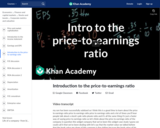
Price to Earnings Ratio (or P/E ratio). Created by Sal Khan.
- Subject:
- Economics
- Social and Behavioral Sciences
- Material Type:
- Lesson
- Provider:
- Khan Academy
- Provider Set:
- Khan Academy
- Author:
- Sal Khan
- Date Added:
- 08/10/2021

Price to Earnings Ratio (or P/E ratio). Created by Sal Khan.

Students will predict bond polarity using electron negativity values; indicate polarity with a polar arrow or partial charges; rank bonds in order of polarity; and predict molecular polarity using bond polarity and molecular shape.

Explore molecule shapes by building molecules in 3D! How does molecule shape change with different numbers of bonds and electron pairs? Find out by adding single, double or triple bonds and lone pairs to the central atom. Then, compare the model to real molecules!

Explore molecule shapes by building molecules in 3D! Find out how a molecule's shape changes as you add atoms to a molecule.

Public vs. Private Equity. Why people buy equity to begin with. Created by Sal Khan.

A situation where the price to earnings ratio seems to not fairly price an asset. Created by Sal Khan.
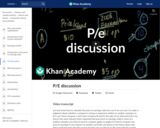
Discussion of the price-to-earnings ratio. Created by Sal Khan.
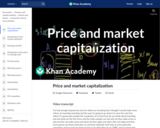
Introduction to price and market capitalization. Created by Sal Khan.

Principles of Macroeconomics 2e covers the scope and sequence of most introductory economics courses. The text includes many current examples, which are handled in a politically equitable way. The outcome is a balanced approach to the theory and application of economics concepts. The second edition has been thoroughly revised to increase clarity, update data and current event impacts, and incorporate the feedback from many reviewers and adopters.Changes made in Principles of Macroeconomics 2e are described in the preface and the transition guide to help instructors transition to the second edition.


By the end of this section, you will be able to:
Explain the relationship between indexing and inflation
Identify three ways the government can control inflation through macroeconomic policy


By the end of this section, you will be able to:
Explain the reason for open market operations
Evaluate reserve requirements and discount rates
Interpret and show bank activity through balance sheets



By the end of this section, you will be able to:
Explain how banks act as intermediaries between savers and borrowers
Evaluate the relationship between banks, savings and loans, and credit unions
Analyze the causes of bankruptcy and recessions
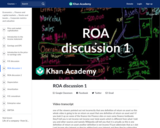
A discussion of the various ways to measure return on assets. Created by Sal Khan.
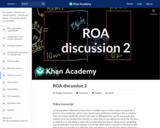
More on the return on asset discussion. Created by Sal Khan.